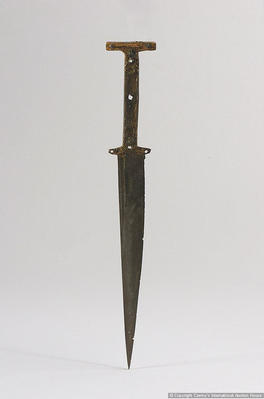It seems that most of them were bouble edge, but some not. Does it have something to do with the time period, or geography?
On some models, is the kind of flattened rig pommel covered with wood, or left open for a rope to secure to the wrist (I think it is called a lanyard, not sure of the english term)
And finally, is the hoblein type dagger considered a baselard? Is it gereralistion or a confusion on terms...or just a confusion on my part... :wtf:
Thank's
Antoine Marçal

